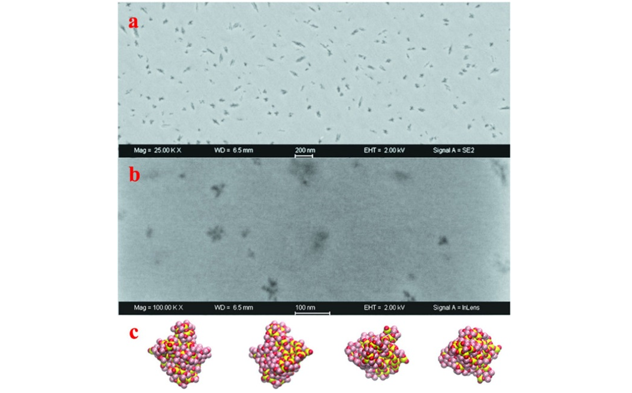 Implicit glass model for simulation of crystal nucleation for glass-ceramics (用于玻璃陶瓷晶体成核模拟的隐式玻璃模型)
Implicit glass model for simulation of crystal nucleation for glass-ceramics (用于玻璃陶瓷晶体成核模拟的隐式玻璃模型)
Matthew E. McKenzie, Sushmit Goyal, Troy Loeffler, Ling Cai, Indrajit Dutta, David E. Baker & John C. Mauro
npj Computational Materials 4:59 (2018)
doi:s41524-018-0116-5
Published online:06 November 2018
Abstract| Full Text | PDF OPEN
摘要:预测玻璃-陶瓷材料中的晶体成核行为,对于构造面向高技术应用的新材料非常重要。由于成核和生长过程十分复杂,模拟晶体微结构的演变是一个很具挑战性的问题。我们引入了隐式玻璃模型(IGM),其基于广义波恩溶剂模型,采用连续介质等效地替换了玻璃,这使得计算可以集中于研究形核的原子团簇以及可作为异相成核位点的未溶解杂质。我们将IGM应用于四种不同的系统:二元硅酸钡(有两种不同的组分)、二元硅酸锂和三元钠钙硅酸盐,并基于已建立的相图验证了我们模拟析出的组分。此外,我们还预测了偏硅酸锂簇成核,并用SEM观察验证了其结构。我们发现实验测量的微结构与基于IGM模拟得到团簇结构相符。
Abstract:Predicting crystal nucleation behavior in glass-ceramic materials is important to create new materials for high-tech applications. Modeling the evolution of crystal microstructures is a challenging problem due to the complex nature of nucleation and growth processes. We introduce an implicit glass model (IGM) which, through the application of a Generalized Born solvation model, effectively replaces the glass with a continuous medium. This permits the computational efforts to focus on nucleating atomic clusters or undissolved impurities that serve as sites for heterogeneous nucleation. We apply IGM to four different systems: binary barium silicate (with two different compositions), binary lithium silicate, and ternary soda lime silicate and validate our precipitated compositions with established phase diagrams. Furthermore, we nucleate lithium metasilicate clusters and probe their structures with SEM. We find that the experimental microstructure matches the modeled growing cluster with IGM for lithium metasilicate.
Editorial Summary
Crystal nucleation: implicit glass model for silicate growth dynamics (晶体形核:硅酸盐生长动力学的隐式玻璃模型)
基于玻璃隐式玻璃模型(IGM),人们可以通过计算来预测玻璃-陶瓷材料晶体生长中的团簇演化过程。来自美国康宁公司、宾州州立大学和阿贡国家实验室的跨学科团队发展了IGM模型,用以深入了解玻璃陶瓷材料中晶体成核过程的基本物理机制。该模型采用扩展的广义波恩模型作为计算方法,将液体/玻璃基体看作隐式溶剂,从而降低了计算量。通过采用连续介质替换玻璃,计算工作可以集中于跟踪成核原子团簇的演变。该方法被成功应用于几种固态体系,包括硅酸钡、二硅酸锂和钠钙硅酸盐,并通过实验验证了IGM模型的有效性。
The evolution of growing clusters in glass-ceramic materials can be predicted computationally with an implicit glass model (IGM). An inter-disciplinary team at Corning Incorporated, the Pennsylvania State University, and ANL developed the IGM to gain insight into the underlying physical mechanism governing the nucleation process of crystal microstructures in glass-ceramic materials. The computational approach uses an extended Generalized Born Model that treats the liquid/glass matrix as an implicit solvent, thus allowing considerable computational savings. By replacing the glass with a continuous medium, the computational effort is predominantly dedicated to tracking the evolution of the nucleating atomic clusters. The method was applied to a number of solid-state systems including barium silicate, lithium disilicate, and soda lime silicate, and the IGM was validated on experimentally synthesized compounds.


 沪公网安备 31010502006565号
沪公网安备 31010502006565号